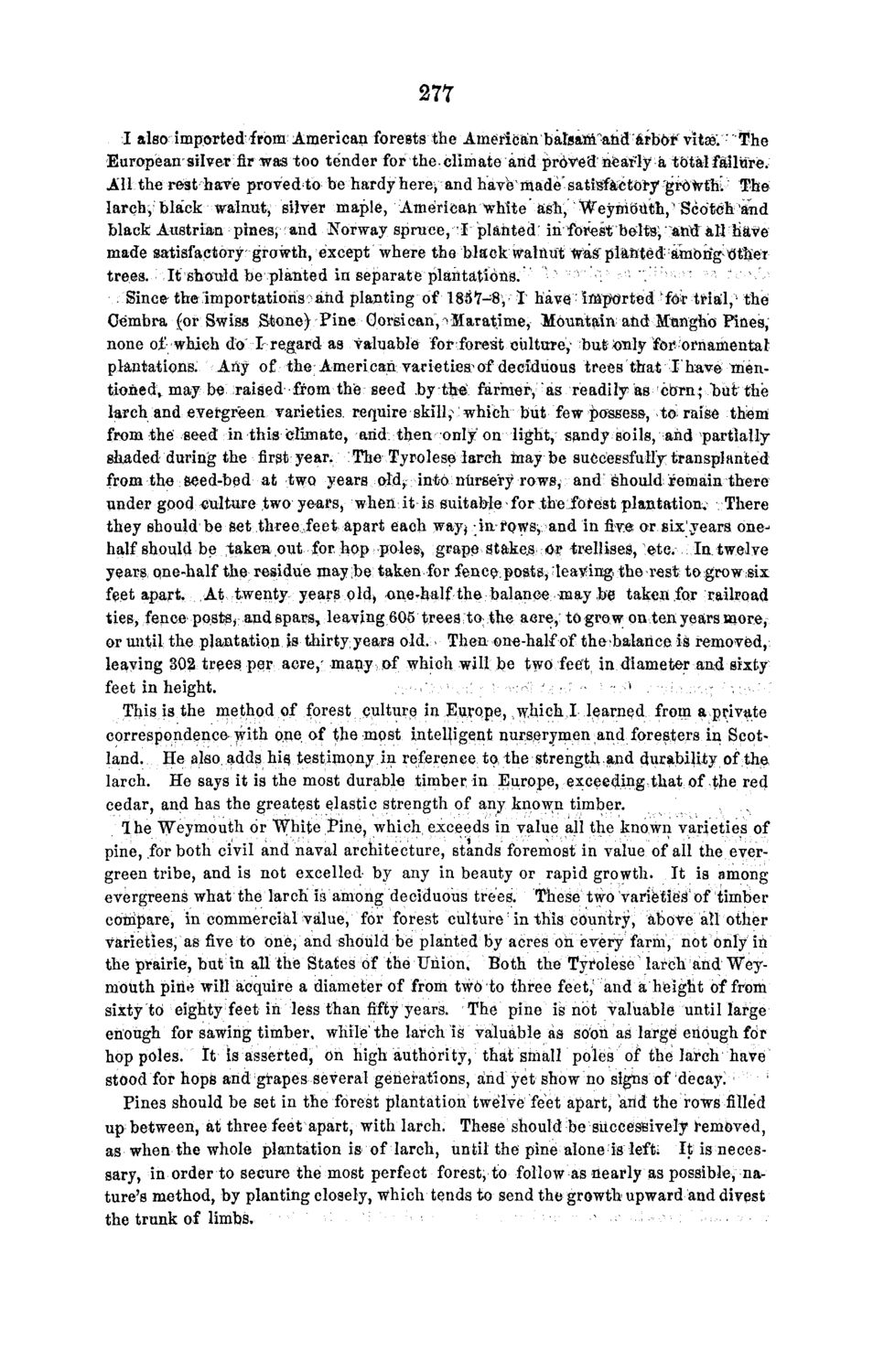| |
| |
Caption: Board of Trustees Minutes - 1868
This is a reduced-resolution page image for fast online browsing.

EXTRACTED TEXT FROM PAGE:
27? I also imported from American forests the American balsarrTaiid arbor vitse. The European silver fir -was too tender for the.climate and proved nearly a total failure. All the rest have proved to be hardy here, and have1 made* satisfactory" growth. The larch, black walnut, silver maple, American white ash, Weymouth," Scotch and black Austrian pines, and Norway spruce, I planted in forest belts, and all have made satisfactory growth, except where the black walnut was planted among-other trees. It should be planted in separate plantations. Since the importations and planting of 18^*7-8, I have imported for trial, the Cembra (or Swiss Stone) Pine Oorsican, ^Maratime, Mountain and Mtmgho Pines, none of which do I regard as valuable for forest culture, but only for ornamental plantations. Any of the American varieties of deciduous trees that I have mentioned* may be raised from the seed by the farmer, as readily as cornj "but the larch and evergreen varieties require skilly which but few possess, to raise them from the seed in this climate, arid then only' on light, sandy soils, and partially shaded during the first year. The Tyrolese larch may be successfully transplanted from the seed-bed at two years old, into nursery rows, and should remain there under good culture two years, when it is suitable for the forest plantation. There they should be set three feet apart each way^ -in rows, and in five or six'years one j half should be taken out for hop poles, grape stakes Or trellises, etc. In twelve years one-half the residue may be taken for fence posts, leaving the rest to grow six feet apart. At twenty years old> one-half the balance *nay be taken for railroad ties, fence posts, and spars, leaving 605 trees to the acre, to grow on ten years more, or until the plantation is thirty years old. * Then one-half of thebalance is removed, leaving 302 trees per acre,' many of which will be two feet in diameter and sixty feet in height. -« This is the method of forest culture in Europe, which I learned from a private correspondence with one of the most intelligent nurserymen and foresters in Scotland. He also adds his, testimony in reference to the strength.and durability of the larch. He says it is the most durable timber in Europe, exceeding that of the red cedar, and has the greatest elastic strength of any known timber. The Weymouth or White Pine, which exceeds in value all the known varieties of pine, for both civil and naval architecture, stands foremost in value of all the evergreen tribe, and is not excelled by any in beauty or rapid growth. It is among evergreens what the larch is among deciduous trees. These two varieties of timber compare, in commercial value, for forest culture in this country, above all other varieties, as five to one, and should be planted by acres on every farm, not only in the prairie, but in all the States of the Union, Both the Tyrolese larch and Weymouth pine will acquire a diameter of from two to three feet, and a height of from sixty to eighty feet in less than fifty years. The pine is not valuable until large enough for sawing timber, while1 the larch is valuable as soon as large1 enough for hop poles. It is asserted, on high authority, that small poles of the larch have stood for hops and grapes several generations, and yet show no signs of decay. Pines should be set in the forest plantation twelve feet apart, and the rovrs filled up between, at three feet apart, with larch. These should be successively removed, as when the whole plantation is of larch, until the pine alone is left. It is necessary, in order to secure the most perfect forest, to follow as nearly as possible, nature's method, by planting closely, which tends to send the growth upward and divest the trunk of limbs.
| |